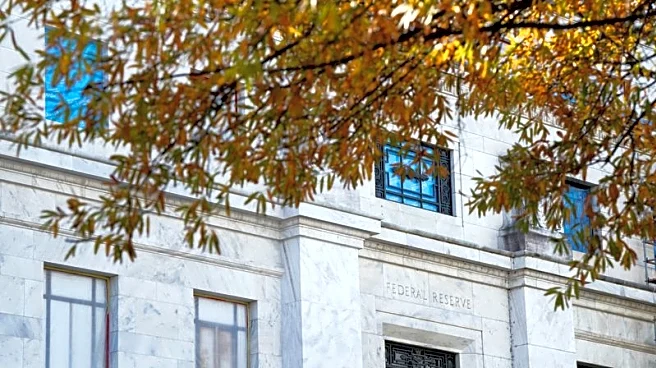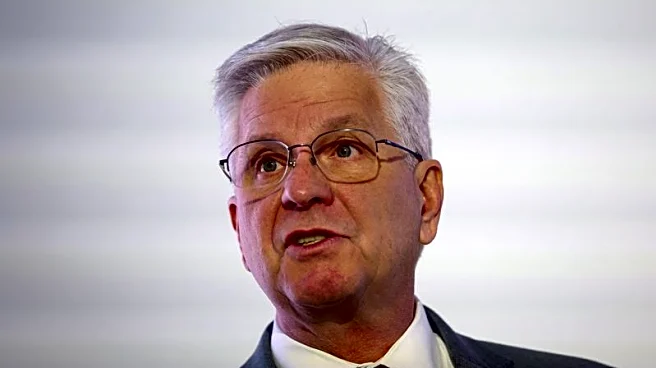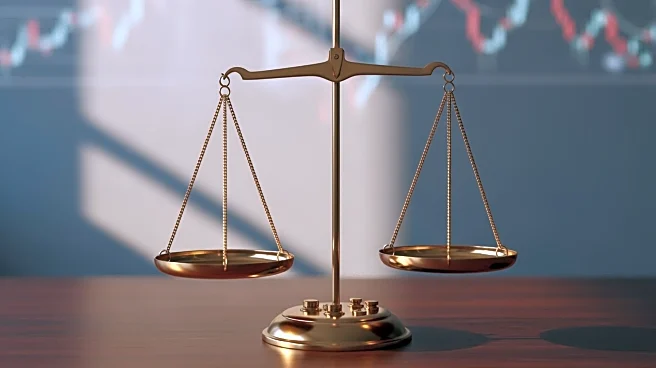By Howard Schneider
WASHINGTON (Reuters) -A divided U.S. Federal Reserve begins receiving updated economic reports from the now-reopened federal government this week as policymakers hope for clarity in their
debate over whether to cut interest rates when they meet in just over three weeks.
It remains unclear how much of the shutdown-delayed data on employment, inflation, retail spending, economic growth, and other aspects of the economy will be in hand by then. As of Monday, the Bureau of Labor Statistics said it would publish the delayed employment report for September on Thursday, but the White House has said some of the October reports may be skipped altogether, while data gathering for November may also be hampered by a shutdown that stretched to mid-month.
But the lines of debate have been sharply drawn, and minutes of the Fed's October meeting to be released on Wednesday could provide more detail on the split that has emerged over whether the risk of higher inflation remains pronounced enough to delay rate cuts for now, or whether slowing job growth and looser monetary policy should take priority.
"I am not worried about inflation accelerating or inflation expectations rising significantly," Fed Governor Christopher Waller said on Monday. "My focus is on the labor market, and after months of weakening, it is unlikely that the September jobs report later this week or any other data in the next few weeks would change my view that another cut is in order" when the Fed meets on December 9-10.
Fed Vice Chair Philip Jefferson meanwhile said the central bank should go "slowly" given the benchmark interest rate, in the 3.75%-to-4.00% range, is likely nearing the level where it will no longer discourage economic activity and put downward pressure on inflation.
Clear camps have formed within the central bank, with several Fed governors - all appointees of President Donald Trump - arguing for another cut, and several regional reserve bank presidents taking a hard line on inflation. Still, the intensity of those divisions may mask a narrower set of concerns about timing and the desire for more data to show a clearer direction for the economy.
The Fed's approval of a quarter-percentage-point rate cut at the October 28-29 meeting included dissents in favor of both looser and tighter monetary policy, a rarity in recent decades. Afterward, Fed Chair Jerome Powell offered unusual, explicit guidance about the outcome of the December meeting.
"There were strongly differing views about how to proceed in December. A further reduction in the policy rate at the December meeting is not a foregone conclusion - far from it," Powell said using language that pointed to a compromise with the policymakers most concerned about inflation.
'GROWING CHORUS' FAVORS NO CUT IN DECEMBER
Those remarks and other recent data have shifted market bets away from a December cut that previously had been given high odds. Policymaker projections in September showed officials themselves anticipated the benchmark interest rate would end the year in the 3.50%-to-3.75% range, a quarter-point below where it is now.
Yet that outlook already showed the sharp division emerging, and some officials since then have intensified their concerns about higher inflation.
"We've got this persistent high inflation that is sticking around. When all is said and done it will be the better part of a decade," said Cleveland Fed President Beth Hammack, among three regional presidents who will take on voting roles next year and who have been among the more strident recently on the need to not rush further cuts because of inflation risks. "Getting (inflation) back to 2% is critical to our credibility," she told MarketWatch in an interview last week.
The array of opinions and the potential gaps in official data pose a challenge for Powell in molding a consensus. Even if some dissents may be unavoidable, possible points of compromise include approving a rate cut at the December meeting but indicating that a pause is likely to follow, or pausing in December but pointing to likely further cuts depending on incoming data.
Officials will issue new quarterly projections at the December meeting that could help reinforce either approach.
The pace of the federal government's data catch-up could also matter. While U.S. central bankers feel they have enough ways to monitor the economy to make a decision, a full suite of catch-up reports could boost their confidence in whatever decision is made.
Even that may fall short of what's needed to produce consensus in a body also facing a leadership transition, with Powell's term as chair ending in May and two of the sitting governors on a short list of possible Trump nominees to replace him.
Some of the forces shaping the job market and inflation, meanwhile, have not been in place long enough for Fed officials to fully understand them. They have little certainty over whether slow job growth is part of the normal business cycle, a product of stricter immigration policy, an outgrowth of weakening demand due to tariffs and inflation, or the first signs artificial intelligence is changing staffing needs.
What policymakers do see clearly right now is that inflation has not changed much in a year and remains about a percentage point above their 2% target.
"A growing chorus of hawks, centrists and even previously dovish FOMC participants appear assured that the data is not likely to justify a rate cut," SGH Macro Advisors Chief U.S. Economist Tim Duy wrote. "We think they want convincing evidence that inflation will return to target," likely pushing any further cuts into next year.
(Reporting by Howard Scheider; Editing by Dan Burns and Andrea Ricci)












